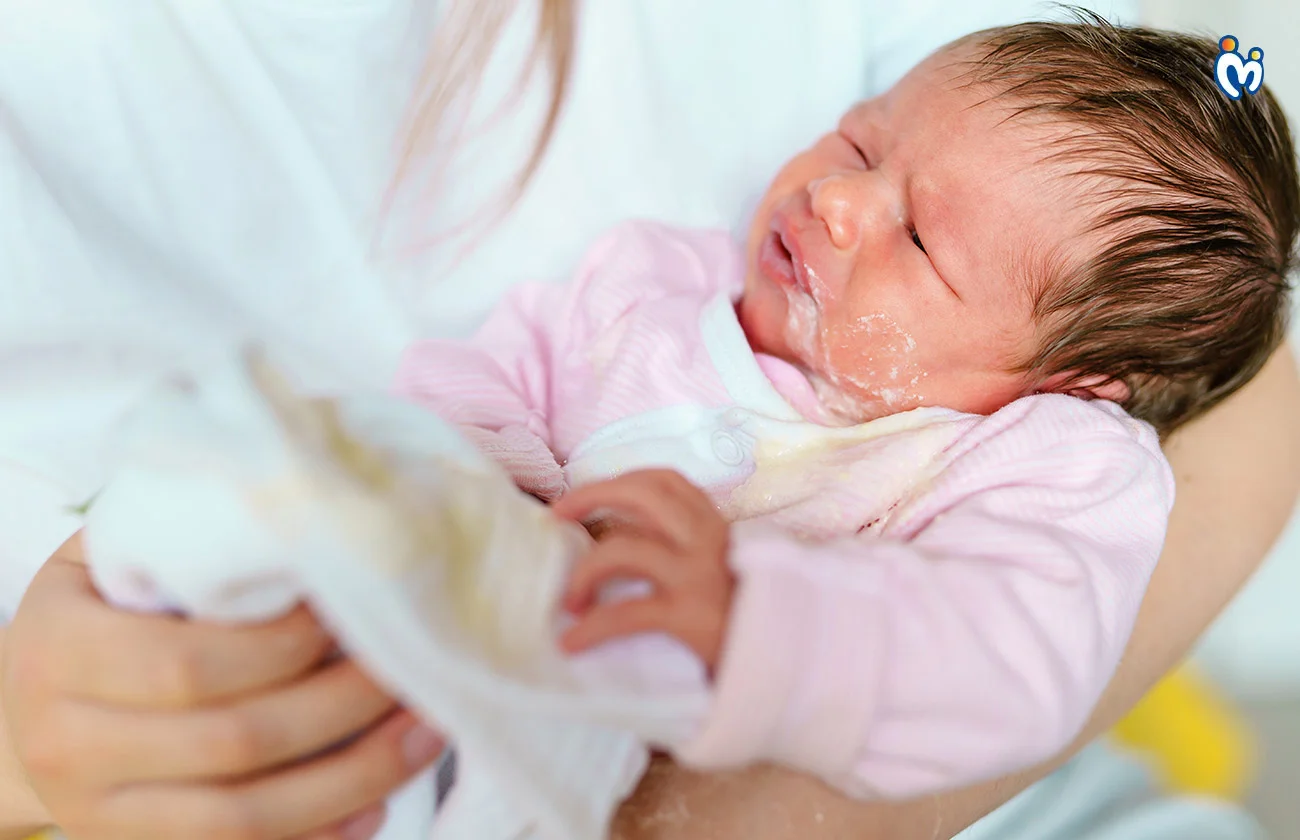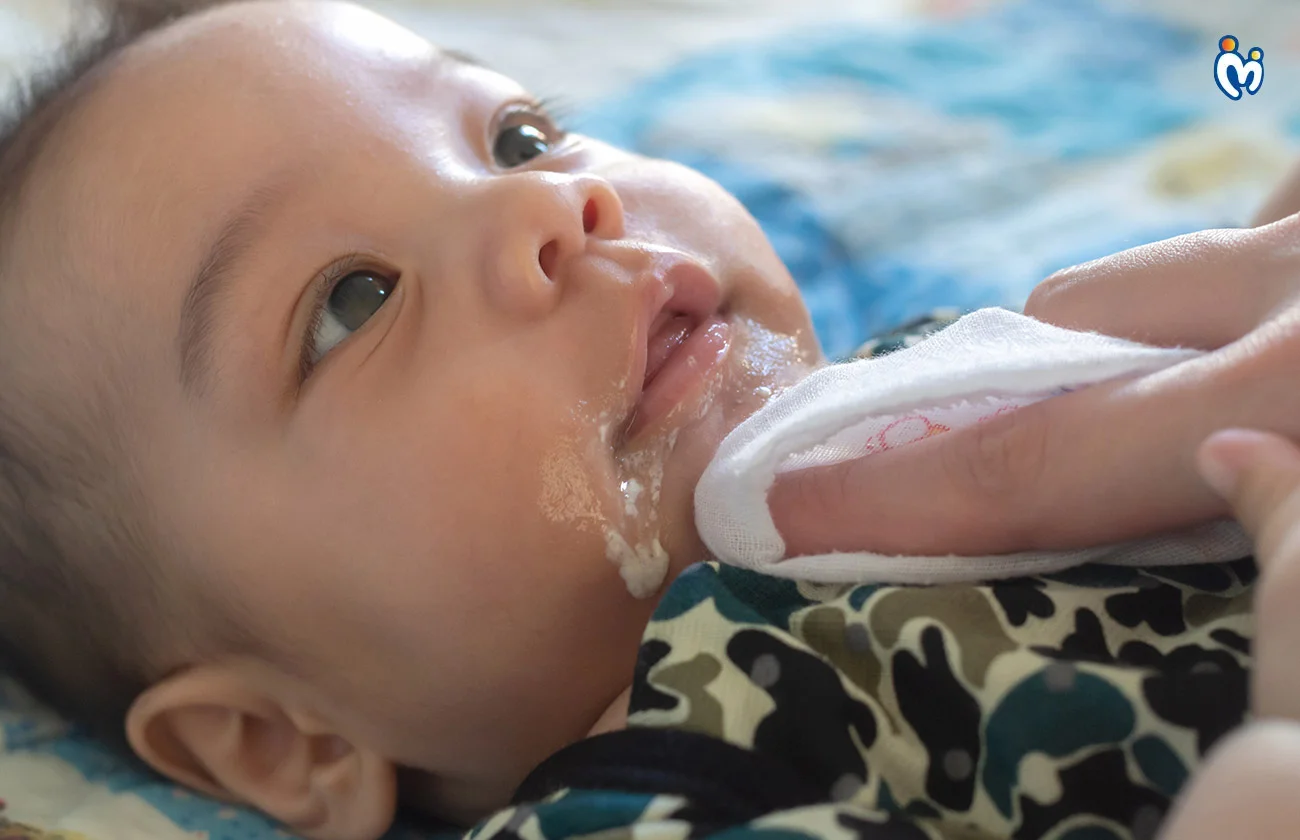(Because happy tummies mean happy babies, which mean well-rested mamies... well, kind of.)
Welcome to the Tummy Troubles Club
There are snuggles. There are yawns. And then… there’s the spit-up on your shoulder.
Newborn digestion is a world of its own, filled with those adorable gurgles, little burps, heart-melting wiggles, and (let’s be real) the noiseless little farts. It’s completely normal to feel a little confused when your baby seems full one moment and fussy the next. But amidst all this, we have good news for you: you’re not alone. It all gets easier with a bit of knowledge (and a steadily available stack of burp cloths).
Let’s decode what’s happening in that tiny tummy, and how you can help your little one digest all that love (and the milk) with ease.
The Newborn Tummy: Small but Mighty
In the early weeks, your baby’s digestive system is still getting used to the world. Everything is brand new for their little body: the milk they’re drinking, the air they’re breathing, their pooping schedules, and even the simple act of swallowing. It’s a massive adjustment that their little body is making, even while you may not realize that it’s happening.
Here’s what that means for you:
- Their tummy is really tiny—about the size of a cherry in week one.
- They digest food very quickly, which is why they need to be fed so frequently.
- Gassiness, spit-up, and the occasional grumpy grunts are all par for the course.
The Basics of Burping: And Why it Matters
Every time your baby feeds, they swallow a bit of air, whether you’re breastfeeding or bottle-feeding. If that air doesn’t come up, it can cause a lot of discomfort and fussiness for your little one.
How to burp like a pro:
- Over-the-shoulder: This one’s a classic burping position. Baby's chin rests on your shoulder while you gently pat or rub their back.
- Sitting position: Hold baby upright, supporting their head and neck, and rub gently in circles until your baby feels relieved.
- Lying on tummy across your lap: This may seem like a slightly more complex maneuver as compared to the two we just discussed, but a gentle back pat in this position often gets a stubborn burp out!

Mamy tip: Burp mid-feed and after feeding to avoid the accumulation of excessive gas. Not all babies burp every time, and that’s okay too.
Spit-Up vs. Vomit: What’s the Difference Between the Two?
Spit-up is like a gentle milk fountain. It’s common and usually harmless. Vomiting is more forceful and may be a sign of something else.
Spit-up tends to happen:
- When the baby eats too quickly.
- If the baby is moved or laid down immediately after a feed.
- Sometimes, it happens during a burp attempt, too.
When to call the doctor: If your baby seems to be in pain, is losing weight, or is vomiting forcefully between feeds (projectile-style), check in with your pediatrician at the soonest.

Gassy Grumbles: Wiggle Them Out of It.
Gassy tummies are super common in newborns. You’ll notice your baby scrunching up, wiggling, grunting, or turning red when passing gas.
Here’s how you can help:
- Bicycle kicks: Gently move their legs in a pedaling motion.
- Tummy massage: Light clockwise strokes around the belly can work wonders to relieve gassiness, too.
- Tummy time: Laying your baby on their tummy (under supervision) relieves some of the pressure due to gassiness.
Mamy mantra: A little wiggle, a little patience, a lot of love.
Reflux: What’s Normal? What’s Not?
Mild reflux (also called GER or spit-up reflux) happens when milk flows back from the baby's tummy into the esophagus. It usually improves as the digestive system matures.
Things to try:
- Hold your baby upright for 20–30 minutes after feeding
- Feed smaller amounts to your baby, more frequently
- Tilt baby’s mattress slightly (with doctor’s guidance only)
If your baby isn’t gaining weight, seems to be in pain during or after feeding, or refuses to eat, bring it up with your doctor. They may check for GERD (a more serious form of reflux).

Feeding Cues vs. Tummy Trouble Cues
These are the cues that your baby is hungry:
- Rooting (turning head looking for nipple)
- Hand to mouth
- Soft whimpering
And these are your cues that your baby is gassy:
- Kicking legs, arching back
- Straining or grunting
- Fussy right after or during feed
You’ll soon start reading these signs like a pro. Trust yourself, Mamy, you’re more in tune than you think.

Here’s Some Real Talk: You’ll Get Spit-Up on Everything
Your clothes, your bedsheets, the baby’s favorite swaddle… it’s all fair game.
Keep a few things handy:
- Clean burp cloths (everywhere)
- A change of clothes for baby and you when heading out
- Mild detergent for clothes that doesn’t affect your baby’s delicate skin
- And… a good sense of humor ;)
This too shall pass. But you’ll never forget the milk moustaches. You might as well have a little laugh about it while you can.

Dear Mamy, You're Doing Great
Feeding, burping, wiggling your baby: it’s a full-time job, and it doesn’t come with a manual. But whenever you pat them on the back, hum a soothing lullaby, change their diaper, it all becomes a part of the love you’re pouring in.
Newborn digestion may be messy, unpredictable, and sometimes loud but it’s also just a sign that your little one is growing. One burp at a time.
FAQ's
Q. Why do newborns spit up so often?
Ans.Newborns have tiny tummies and immature digestive systems, making spit-up common. It usually happens when they drink too quickly, swallow air, or are moved soon after feeding. Spit-up is typically harmless and decreases as your baby grows. Keeping them upright for a while post-feeding can help reduce it.
Q. How can I tell the difference between spit-up and vomiting?
Ans.Spit-up is mild, effortless, and often happens during or soon after feeding. Vomiting is more forceful, sometimes projectile, and may indicate illness or digestive issues. If your baby seems to be in pain, loses weight, or vomits forcefully between feeds, contact your pediatrician for further evaluation and guidance.
Q. How often should I burp my baby?
Ans.Burping mid-feed and after every feeding session helps release swallowed air and reduces fussiness. Some babies need frequent burping, while others rarely do. Experiment with different positions, such as over-the-shoulder or sitting upright. If your baby seems uncomfortable during feeding, pause and burp them before continuing with the feed.
Q. What are the best burping positions for newborns?
Ans.Common burping positions include placing your baby over your shoulder while gently patting their back, sitting them upright on your lap with head support, or laying them across your lap on their tummy. Every baby is different, so try these positions to see which works best for relieving gas.
Q. How can I help my baby with gas discomfort?
Ans.Gentle tummy massages in circular motions, supervised tummy time, and bicycle leg movements can relieve gas. Feeding your baby in an upright position and burping frequently also help. Patience is key, as newborns often outgrow excessive gassiness as their digestive systems mature in the first few months of life.
Q. What is reflux, and when should I worry?
Ans.Reflux is when milk flows back from the stomach into the esophagus, causing spit-up. It’s usually harmless and improves as your baby grows. Seek medical advice if your baby refuses feeds, loses weight, cries in pain during feeds, or vomits forcefully, as these may indicate more serious reflux issues.
Q. How can I manage reflux at home?
Ans.Feed your baby smaller amounts more frequently, keep them upright for 20–30 minutes after feeding, and avoid tight clothing around their tummy. Slightly elevating their mattress (only with medical advice) can also help. If symptoms worsen or affect weight gain, consult your pediatrician for personalized recommendations and care.
Q. How can I tell if my baby is hungry or has tummy trouble?
Ans.Hunger cues include rooting, sucking on hands, and soft whimpers. Tummy trouble cues include kicking legs, arching the back, fussiness after feeds, and grunting. Learning these signs helps you respond better. Over time, you’ll recognize your baby’s unique patterns, making it easier to meet their needs promptly and effectively.
Q. How can I keep baby clothes clean with constant spit-up?
Ans.Keep multiple burp cloths handy, use bibs during feeds, and change soiled clothes promptly. Wash baby clothes with a mild, hypoallergenic detergent to protect delicate skin. Having a spare outfit for both baby and yourself when going out helps you stay prepared for unpredictable spit-up moments throughout the day.
Q. When should I call the doctor about digestion issues?
Ans.Contact your pediatrician if your baby vomits forcefully, refuses feeds, loses weight, seems to be in pain while feeding, or has green or blood-streaked vomit. Frequent, harmless spit-up is normal, but these symptoms may indicate underlying issues that need medical evaluation and timely intervention for your baby’s health.
















